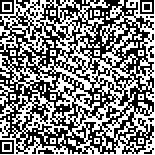| 摘要: |
| [摘要] 目的 探讨横切面与纵切面联合定位法在乳腺肿物微创切除术中的应用效果。方法 选择2021年3月至2022年4月于凉山州第二人民医院接受真空辅助乳腺微创旋切术的乳腺肿物患者648例。其中复杂性乳腺囊肿24例,单发乳腺纤维瘤489例,多发乳腺纤维瘤135例。根据手术定位方式不同,分为对照组(采用横切面定位法,306例)和观察组(采用横切面与纵切面联合定位法,342例)。比较两组手术时间、术中出血量,以及术后并发症发生情况和肿物残留情况。结果 观察组手术时间短于对照组[(6.14±1.86)min vs (8.90±2.86)min],术中出血量少于对照组[(4.29±1.38)ml vs (6.94±2.15)ml],差异有统计学意义(P<0.05)。对照组术后发生出血2例,血肿12例,皮下瘀斑13例。观察组术后发生出血1例,血肿8例,皮下瘀斑9例。观察组术后并发症发生率显著低于对照组(3.22% vs 8.82%;P<0.05)。术后3个月复查乳腺彩超,结果显示,对照组有肿物残留11例(3.59%),观察组有肿物残留4例(1.17%),两组术后肿物残留率比较差异有统计学意义(P<0.05)。结论 在乳腺肿物微创切除术中,横切面与纵切面联合定位法能让术者更准确地判断旋切探针与肿物的空间位置,有助于精准切除肿物,手术用时短,出血量少,并发症发生率及肿物残留率低,值得临床推广。 |
| 关键词: 乳腺肿物 真空辅助乳腺微创旋切术 横切面与纵切面联合定位法 肿物残留 并发症 |
| DOI:10.3969/j.issn.1674-3806.2022.10.14 |
| 分类号:R 605 |
| 基金项目:凉山州科技计划重点研发项目(编号:21ZDYF0039) |
|
| A study on the application effect of transverse and longitudinal combined positioning method on minimally invasive resection of breast lumps |
|
LI Zhi-ling, LIU Cheng-kuan, YANG Hai-tao, et al.
|
|
Department of Thyroid and Breast Surgery, the Second People′s Hospital of Liangshan Yi Autonomous Prefecture, Sichuan 615000, China
|
| Abstract: |
| [Abstract] Objective To investigate the application effect of transverse and longitudinal combined positioning method on minimally invasive resection of breast lumps. Methods Six hundred and forty-eight breast lump patients who underwent vacuum-assisted minimally invasive breast atherectomy in the Second People′s Hospital of Liangshan Yi Autonomous Prefecture from March 2021 to April 2022 were selected. Among them, there were 24 cases of complex breast cysts, 489 cases of single breast fibroma, and 135 cases of multiple breast fibroma. According to different surgical positioning methods, the patients were divided into the control group(receiving treatment by using transverse positioning method, 306 cases) and the observation group(receiving treatment by using transverse and longitudinal combined positioning method, 342 cases). The operation time, intraoperative blood loss, postoperative complications and residual tumors were compared between the two groups. Results The operation time of the observation group was shorter than that of the control group[(6.14±1.86)min vs (8.90±2.86)min], and the intraoperative blood loss of the observation group was less than that of the control group[(4.29±1.38)ml vs (6.94±2.15)ml], and the differences were statistically significant(P<0.05). In the control group, postoperative hemorrhage occurred in 2 cases, hematoma in 12 cases, and subcutaneous ecchymosis in 13 cases. In the observation group, postoperative hemorrhage occurred in 1 case, hematoma in 8 cases, and subcutaneous ecchymosis in 9 cases. The incidence of postoperative complications in the observation group was significantly lower than that in the control group(3.22% vs 8.82%; P<0.05). The breast color ultrasound was reexamined 3 months after operation, and the results showed that there were 11 cases(3.59%) with residual tumors in the control group and 4 cases(1.17%) with residual tumors in the observation group. There was a statistically significant difference in the residual tumor rate between the two groups after operation(P<0.05). Conclusion In the minimally invasive resection of breast lumps, the transverse and longitudinal combined positioning method allows the operator to determine the spatial position of the atherectomy probe and the lumps more accurately, which is helpful for accurate excision of the lumps, with short operation time, less bleeding, low rates of complications and residual tumors. The method is worthy of clinical promotion. |
| Key words: Breast lump Vacuum-assisted minimally invasive breast atherectomy Transverse and longitudinal combined positioning method Residual tumor Complication |

